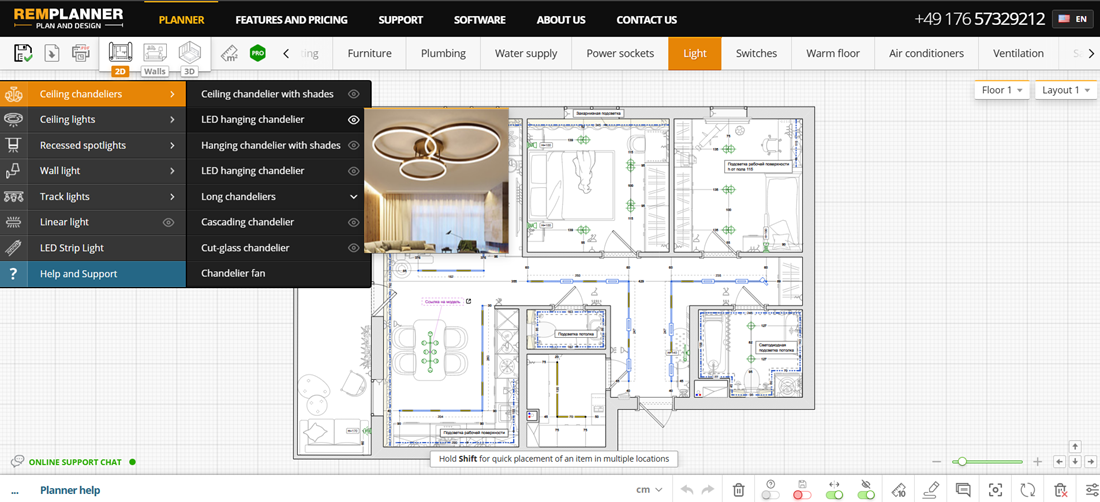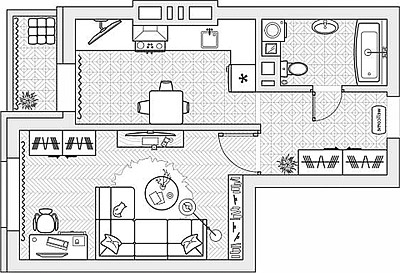Your go-to resource for expert insights and carefully curated professional advice. Plan your renovation with confidence and ease
The Value of Planning: Plan First, Build Better
26.03.2025, 14:59 GMT Views: 1112 Likes: 38
This article explores the risks of improvisation, the benefits of structured blueprints, and how modern tools like Remplanner simplify the process.

Measure twice, cut once. This timeless wisdom applies to more than just carpentry — it is as well the foundation of any successful renovation.
There was a time when home renovations were guided by intuition rather than strategy. A contractor would show up, chalk in hand, sketch a few markings on the walls, and work would begin. Decisions were made on the fly, changes were inevitable, and budgets stretched beyond expectations. While this approach may have worked in the past, in today’s fast-paced world, it is not the best one.
The Challenges of Improvisation
Imagine orchestrating a symphony without musical notes. Each musician plays by ear, adjusting in real-time, and hoping that the final result is harmonious. Now apply this to a renovation — electricians guessing where sockets should go, walls being moved mid-project, and expensive materials being ordered last-minute to accommodate unexpected changes. The result? Delays, wasted resources, and rising costs.
Lack of detailed planning leads to:
- Unforeseen expenses that exceed initial estimates
- Scheduling difficulties due to ongoing adjustments
- Miscommunication between designers, contractors, and homeowners
- Compromised quality as rushed decisions replace thoughtful design

A home renovation is not just a simple rearrangement of furniture; it is a complex process that requires precise coordination. When one element shifts, it triggers a domino effect — changing the placement of an electrical socket might mean moving an entire wall, which in turn alters the lighting plan. Without a structured blueprint, homeowners often find themselves trapped in a cycle of last-minute fixes and budget overruns.
The Power of Blueprints
A structured renovation process begins with a clear, fixed and detailed plan — one that doesn’t exist solely in someone’s imagination. Architectural drawings, precise measurements, and a well-thought-out timeline align all parties involved from the start. With technology at our disposal, planning has become more advanced, allowing homeowners to visualize their space, make informed decisions, and avoid costly mistakes.

Modern planning tools, like Remplanner online software, streamline the process, offering:
- Visual clarity: see the final design before construction begins.
- Budget control: Anticipate costs and prevent financial surprises.
- Effective communication: Align contractors, architects, and clients.
- Adaptability within structure: Make adjustments before, not during, execution.
In the digital age, homeowners are no longer limited to paper and guesswork. Advanced software solutions like Remplanner online allow for 3D modeling, real-time material selection, and cost estimations for different design solutions with just a few clicks. By integrating these tools into the renovation process, space owners gain a sense of control and confidence, making every decision based on data rather than assumptions.
The True Cost of Poor Planning

Some might argue that hiring an interior designer or investing in professional planning tools is an unnecessary expense, but the reality is quite the opposite. The cost of making changes mid-renovation — reordering materials in approximate quantities, redoing electrical work, or even tearing down walls — can far exceed the initial investment in a well-structured plan.
Consider this: A homeowner decides to skip the planning phase and moves forward with renovation based on rough ideas. Halfway through, they realize that the kitchen layout does not accommodate proper ventilation. The solution? Either compromise on air quality or spend thousands on additional ductwork and redesigns. Had they used professional planning software, such oversights could have been avoided altogether.
Moreover, unplanned renovations often take an emotional toll. Stress levels rise as homeowners deal with unexpected problems, tight deadlines, and escalating costs. What should have been an exciting transformation turns into a source of frustration and regret.
Smart Planning, Smarter Renovations
Gone are the days of impulsive renovations. Experienced homeowners and professionals understand the value of planning with precision. By leveraging digital tools that offer 3D visualization, real-time adjustments, and integrated cost analysis, the renovation process becomes seamless, predictable, and stress-free.
Surprisingly, many homeowners hesitate to explore these solutions, assuming that professional-quality results are only achievable with an interior designer. And the choice often seems binary — either hiring a professional, or, if there is no budget for it, proceeding with renovation without any structured planning. However, there is a third option: leveraging modern software to achieve designer-quality results independently, with no prior experience required. For instance, this design project was entirely created from scratch in Remplanner by a homeowner with no prior design experience (design published with the homeowner's permission).

Or look at this electrical plan. Does it seem complicated?
In reality, it is not, thanks to Remplanner software. Simply input your desired characteristics for the home’s electrical system — socket locations, lighting preferences, and appliance connections — and the software will automatically generate few technically correct options that do not conflict with other home utility systems, such as ventilation and plumbing.
With this approach, the process suddenly feels much more manageable. And that’s exactly what Remplanner offers — a way to simplify what seems overwhelming at first glance. Ironically, many homeowners, upon seeing blueprints, feel intimidated and mistakenly conclude that they can do without them, assuming that electricians can simply figure everything out on-site. However, relying on improvisation instead of precise plans often leads to costly mistakes and inefficiencies.
In an era where technology simplifies even the most complex projects, relying on outdated, instinct-driven renovation methods is not just impractical — it introduces unnecessary risks. Investing in planning means avoiding unnecessary complications down the road.
The best part? Planning doesn’t have to be a cumbersome process. Modern tools allow for intuitive design adjustments, material previews, and collaboration between all parties. With the right approach, what once seemed like an overwhelming task becomes a streamlined, enjoyable journey toward creating the perfect living space.
So before you pick up that hammer or call the first contractor available, ask yourself — do you want to gamble with your time, money, and peace of mind, or do you want to renovate with confidence? The answer is clear and needs no second thought.
 Antonella
Antonella


